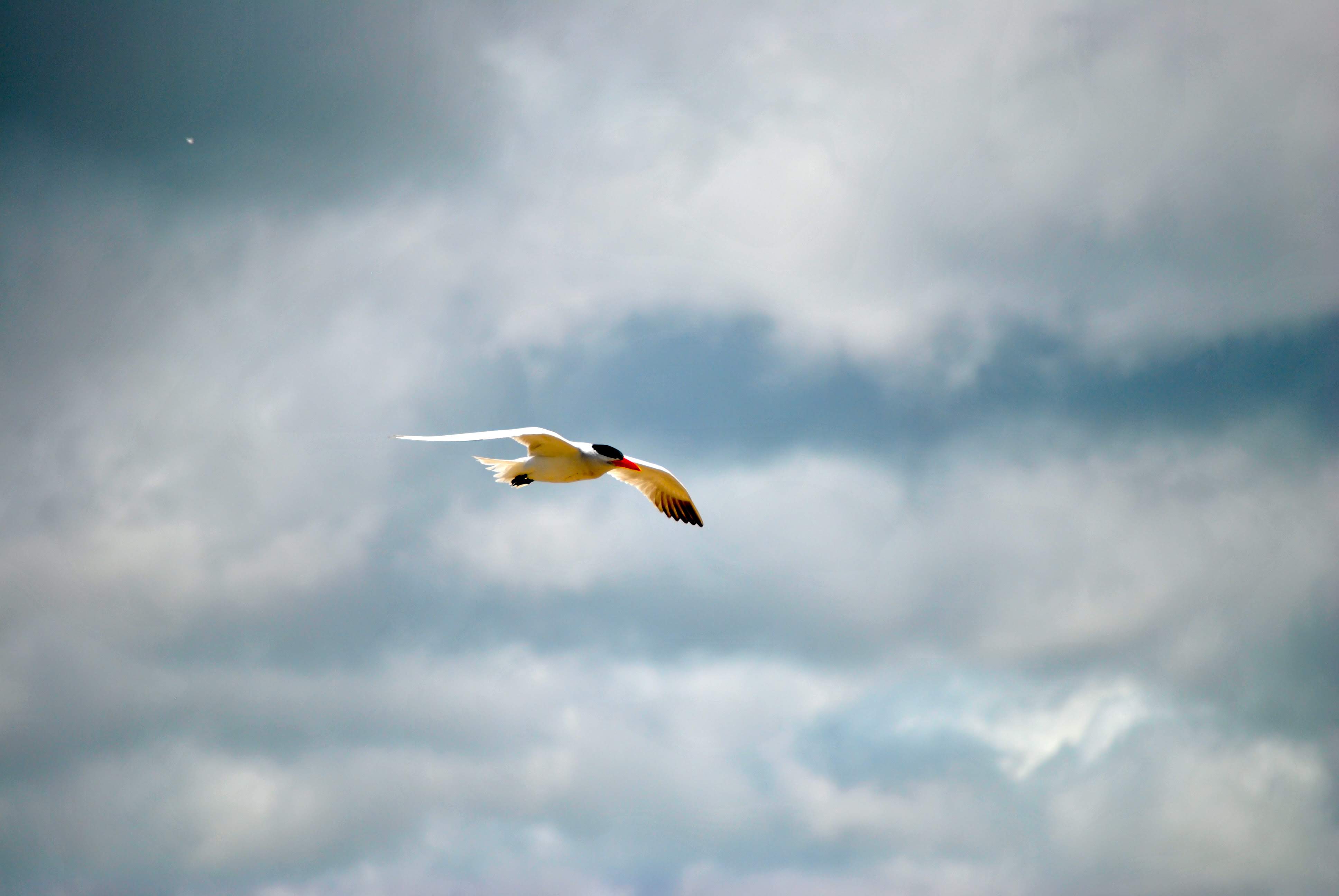
One morning a week or so ago I was at a park on the north shore of Lake Washington. The park has a long pier, and I was standing on the pier’s end when I heard a harsh shwarrk off in the distance. I perked up, strained my ears. There it was again: Shwarrk! Shwarrk! Maybe a quarter mile away or so I eventually saw the source of the sound gliding over the lake: a white body, long slender wings, a coal black head, a rich red bill: a Caspian tern.
The tern flew towards the pier, its wings so liquid in their movement that they seemed not to have bones. When it was a few dozen yards away, it spied something in the water and flared its tail, turning in a tight circle. Abruptly it folded its wings and dropped into the water with a surprisingly large splash. It emerged moments later clasping a small fish in its bill. As it labored back into the air, a gull saw it with its prize and swooped down on it. The tern dodged out of the way and flapped off, gulping down the fish before calling out: Shwarrk! Shwarrk!
I love Caspian terns. Before it was impermissible to write such things in the formal literature, biologists used to call them “the king of all terns.” The largest of their genus, they can be up to two feet long, with a wingspan of nearly five feet. They might live for twenty years, and are found throughout much of the world. Their return to the Pacific Northwest is one of my favorite signs of spring. I pay attention to migration differently now. When I was a callow youth, spring was the season to scour large passing flocks for the rare or astray. These days, undeniably middle-aged, I appreciate the way birds mark time with their collective rhythms. But the terns have other resonances, too.
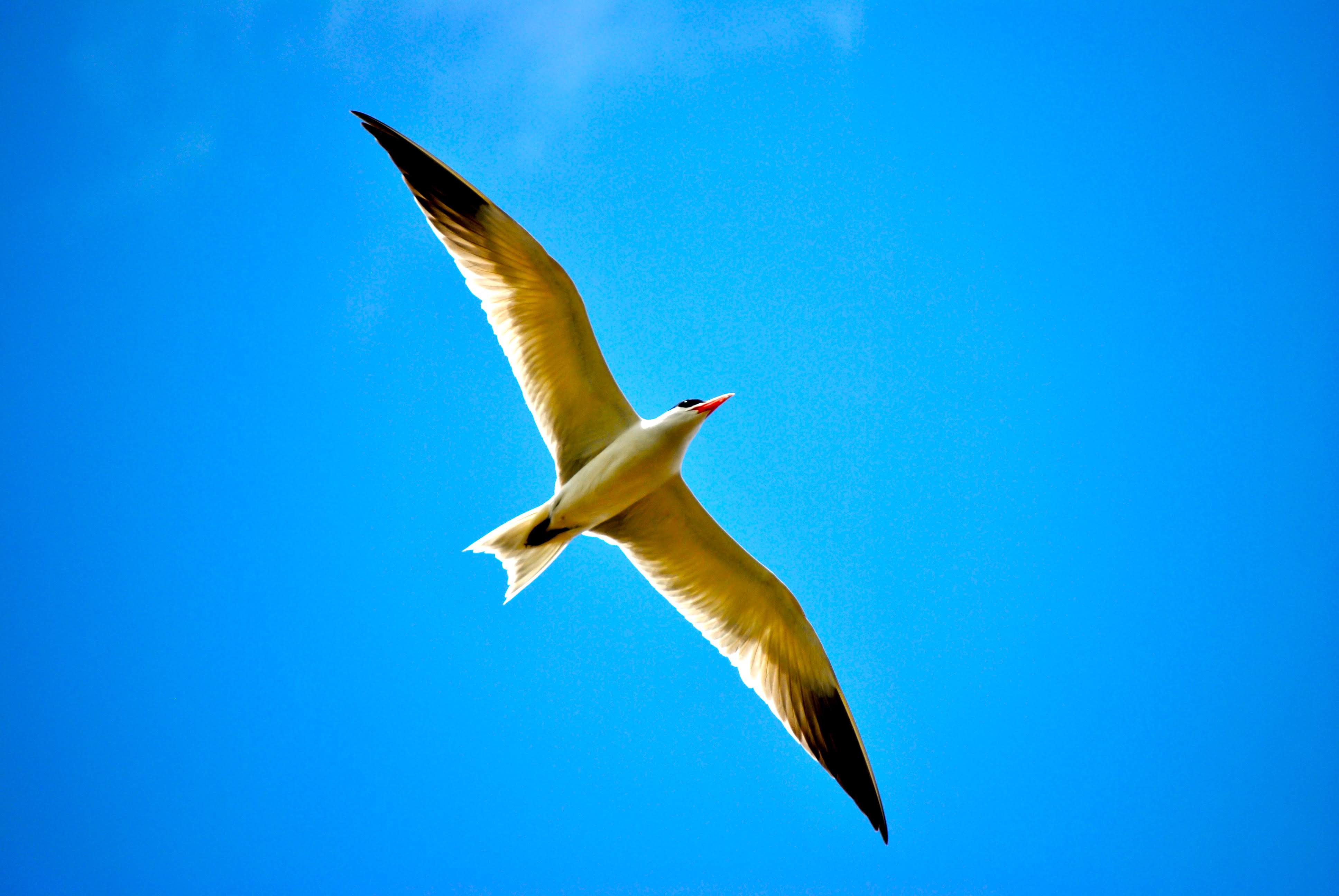
I first saw Caspian terns in Astoria, Oregon, near the mouth of the Columbia River, where I grew up. Small though it may be, Astoria is well known among tern aficionados because it once hosted the species’ largest colony in North America. In the late 1980s, a few terns began to nest on Rice Island, a mound of dredge spoils a few miles upriver of town. (As it happens, Rice Island is partially made of sediments from Mount St. Helens’ 1980 eruption, but that’s another story.) The terns were drawn to the squat little island because they like open sandy ground; and they especially like it if that open sandy ground is next to a river that funnels hordes of young salmon past them.
All summer the terns patrolled the river, flying back and forth with their heads down, watching the water. When they spotted a fish they twisted and dove from high in the air. Sometimes the river boiled with their splashes as they plunged arrow-straight into the water to snap up smolts swimming out to sea. Before long, they were nesting on Rice Island by the tens of thousands.
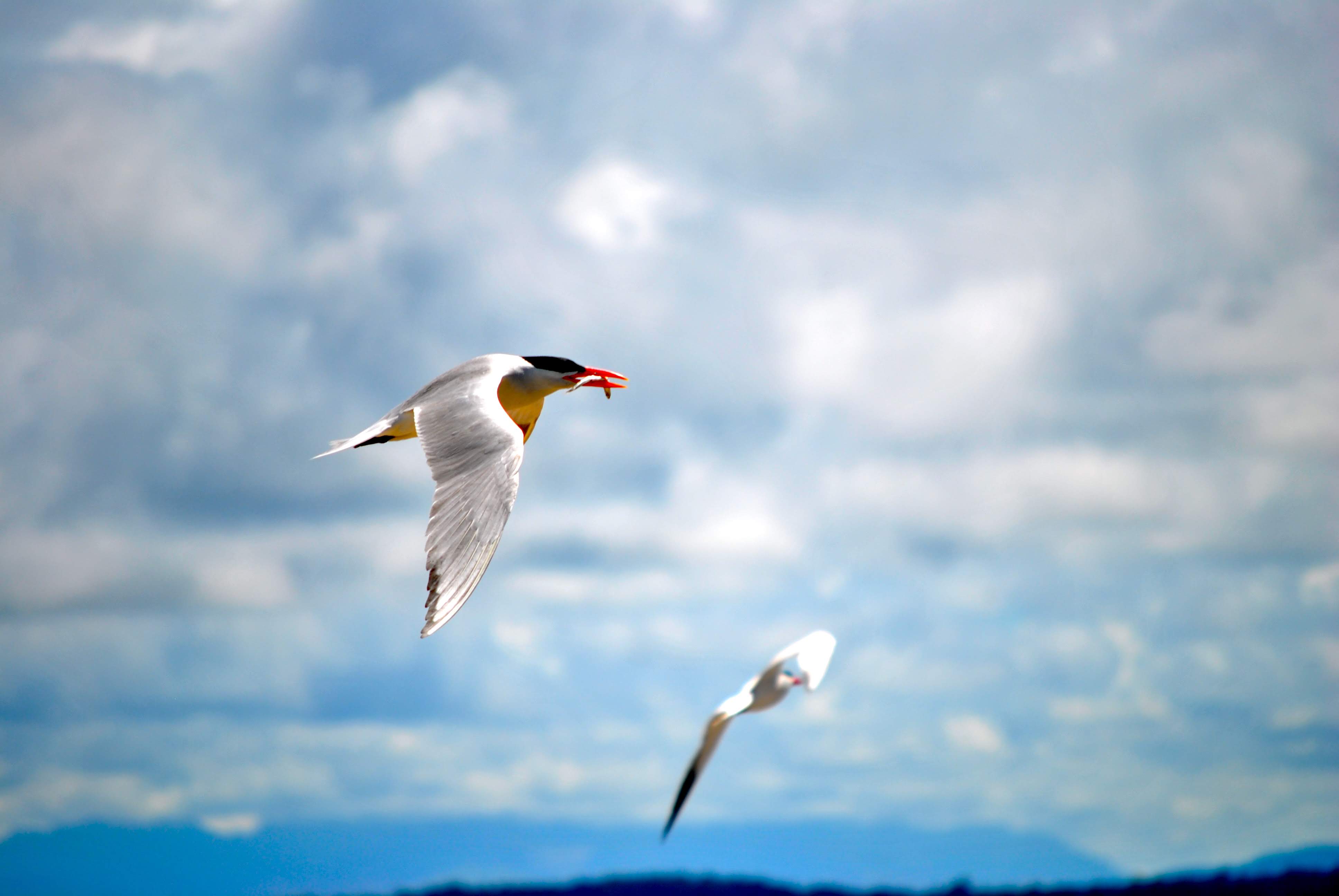
Here the terns began to confront certain human exigencies. As can happen. It turned out that their successes were unacceptable. The federal government was—is—spending millions of dollars every year to prop up declining salmon stocks throughout the Columbia Basin, and the thought of all that money disappearing down tern gullets was more than even the most well-intentioned manager could bear.
Eventually the U.S. Army Corps of Engineers set about making Rice Island inhospitable to terns. Corps personnel planted wheat to cover the ground and installed wooden cutouts of bald eagles, an avowed tern enemy. At the same time, they put decoys of adult terns and piped tern calls from loudspeakers at a place called East Sand Island, some miles downriver.
The terns duly moved, after which the Corps encircled their new colony with black fencing, progressively shrinking it until the terns now have about an acre of open ground at their disposal. On this postage stamp, gridded with painted pegs and colored rope to make surveying easier, a few thousand pairs still pack themselves.
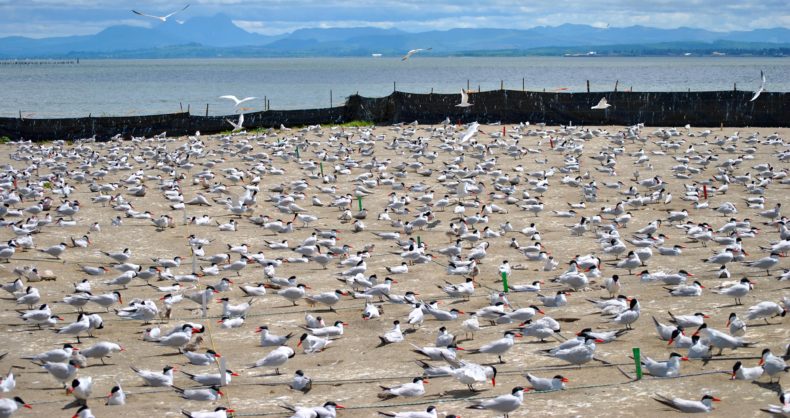
I have always admired the Caspian terns of the Lower Columbia for their defiance, even as I knew they do not think in such terms. Up in Seattle, they court considerably less controversy. In part this is because there aren’t as many of them; and also, where salmon are concerned, people in the Puget Sound region save their venom for other villains, like sea lions and seals.
At Lake Washington, then, I can watch the terns and appreciate their fluid grace without the additional political freight. If I am so inclined. But if I’m honest, I like it when animals have a little spice. I like it when their stubborn presence makes it plain just how entangled we and they are together, how they make us say out loud what we want and why, what we are or are not willing to change. Not that I begrudge these terns their relative peace, or wish them the travails of their conspecifics down at East Sand Island. I’m sure they have enough on their minds as it is.
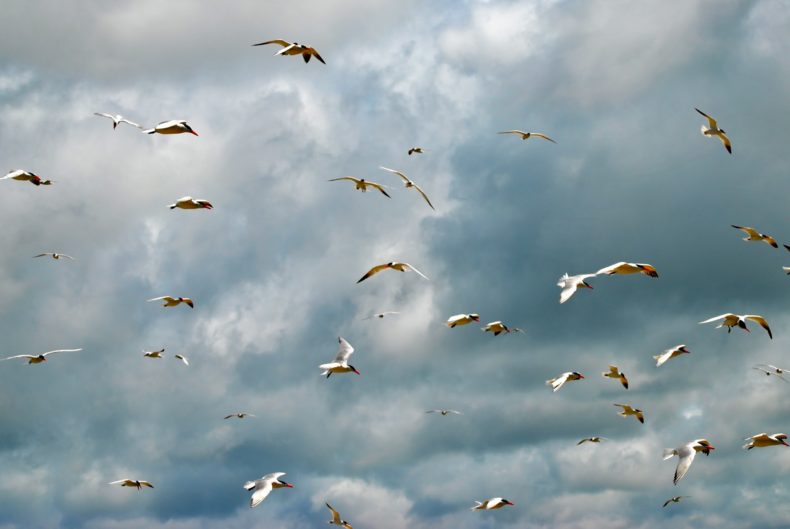
Photos by the author
Lovely writing… Only humans could possibly turn a simple, natural-working biological system into something so complex and contrived that we have to choose between two very normal, healthy operations that should coexist simultaneously. Can we learn to leave things alone long enough for them to work out their own rhythms and equilibrium?
Thanks for your thoughts, Bill. I’d like to think that from time to time we are occasionally willing and able to leave things alone (which is to say, we don’t directly intervene). But yes, more often than not, tinkering with systems–pulling on their levers and fiddling with their knobs, expecting one thing to happen and being surprised when it doesn’t–is something we are all too eager to do.